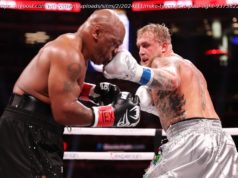Mr. Molinaro, 42, entered politics as a 19-year-old mayor of Tivoli, a small village in Dutchess County, where he is now county executive.
Marcus J. Molinaro, a moderate county executive from the Hudson Valley, was formally designated on Wednesday as the Republican Party’s choice to unseat Gov. Andrew M. Cuomo, a two-term Democrat, in November.
His task will be daunting: The last time a Republican captured a statewide office in New York was in 2002, when George E. Pataki won his third and final term as governor.
But Mr. Molinaro is no stranger to political upheaval; at 19, he was elected mayor of the village of Tivoli, making him the youngest such official in the nation. He then ascended to county legislator, state assemblyman and, finally, Dutchess County executive.
As Mr. Molinaro addressed Republican committee members assembled at the party’s quadrennial convention in Midtown Manhattan, he quoted Theodore Roosevelt and reached across party lines to beckon to Democrats and independents — a necessity given that Democrats outnumber Republicans by more than 2-to-1 in the state.
But he also took care to rip into Mr. Cuomo, alluding to the presidential aspirations and transactional politics that have quickly become his favorite talking points.
“Working- and middle-class families can’t afford to pay for the political ambitions of individuals any longer,” Mr. Molinaro said in his acceptance speech. “Our priority will be the people, not a governor seated atop the heap plotting to run for president, trading billions in government contracts for millions in campaign dollars.”
Mr. Molinaro, 42, suggested the broad themes of his campaign. He vowed to adopt an efficient, fair and scrupulous approach to government: consolidating services, cutting taxes, adopting a universal ethics code and preserving a social safety net. He also put a centrist mind-set on display, avoiding any mention of President Trump.
“I have no interest in ideology for ideology sake,” he said. “That doesn’t solve problems, people do. It’s results I’m after. I think it’s why people from all backgrounds and viewpoints keep electing me.”
Not surprisingly, Mr. Pataki was tapped to introduce Mr. Molinaro, hearkening back to his own surprise victory in 1994 when he trailed in polls by 17 points. “I don’t think I had ever raised more than $35,000 in a campaign in my whole life,” he said. “Over the next five months, the people of New York got to know me. Then that November, everyone was stunned — particularly our friends in the media — when a Republican was elected governor for the first time in 24 years.”
Another obstacle for Republicans, however, is the expected “blue wave,” in which Democrats fed up with President Trump are expected to turn out to vote in large numbers.
Still, some Republicans say that their party might be able to navigate a slender path to the biggest prize — the governor’s office. The scenario hinges on a number of “ifs,” involving Democrats splitting their votes in November and tipping the election to Mr. Molinaro.
That potential route to victory would capitalize on fissures within the Democratic Party, evident during the 2016 presidential election when Hillary Clinton struggled to dispatch the more liberal Senator Bernie Sanders. Similarly in New York, voters must choose between more moderate, establishment Democrats like Governor Cuomo and liberal activists like his Democratic challenger, Cynthia Nixon.
(By contrast, Republicans in New York appear united; party officials said they are unaware of any candidate plotting to win a spot on the ballot by gathering signatures on petitions.)
If Mr. Cuomo wins the Democratic primary and if Ms. Nixon chooses to remain on the ballot in November under the small, but influential Working Families Party, then Mr. Molinaro, the thinking goes, could come out on top. Ms. Nixon, of course, will likely face enormous pressure to take her name off the ballot.
William F. B. O’Reilly, a Republican strategist who recently signed on with the Molinaro campaign, said a three-way race would “change everything,” adding that “there’s an all-out war going on in the New York Democratic Party between progressive reformers and a Cuomo-led establishment that many view as corrupt.” Mr. O’Reilly predicted that Mr. Molinaro was the “type of Republican” who could draw moderate Democrats and independents.
Mr. Molinaro, who is the son of a single mother and grew up in a family that relied on food stamps, is now in his second term in Dutchess, a prosperous county of nearly 300,000 residents on the east side of the Hudson River.
In the afternoon, delegates approved Mr. Molinaro’s choice of lieutenant governor, Julie Killian, another moderate Republican and the former deputy mayor of Rye in Westchester County. In a special election in April, Ms. Killian lost her bid for State Senate by 15 points.
Democratic leaders in New York were quick to portray Mr. Molinaro as out of step with the state’s values. “I think he’s more in sync with Donald Trump than the people of New York,” said Geoff Berman, the executive director of the state’s Democratic Party.
Mr. Berman dismissed the possibility that Mr. Molinaro would benefit from a fractured Democratic vote in the general election. “I’m confident that by the time we get to the fall, Democrats will be united,” he said. “There is far more at stake in November and what unites us — our common values and progressive agenda — is far greater than what we sometimes disagree on.”






